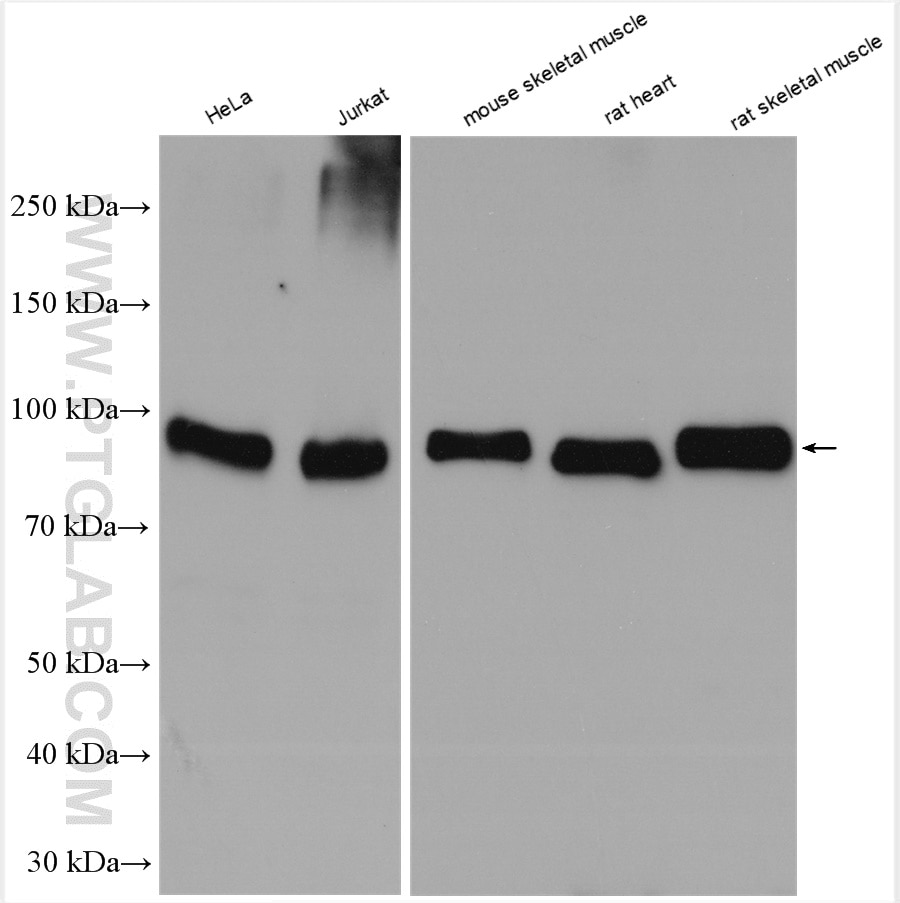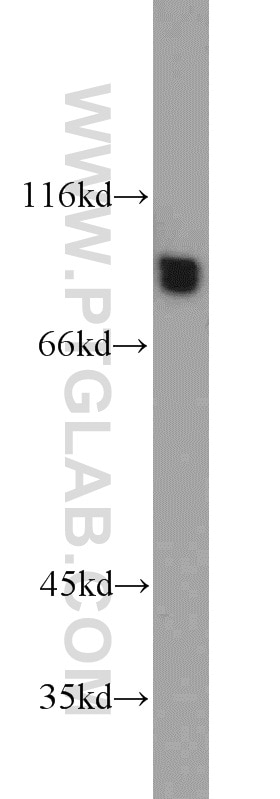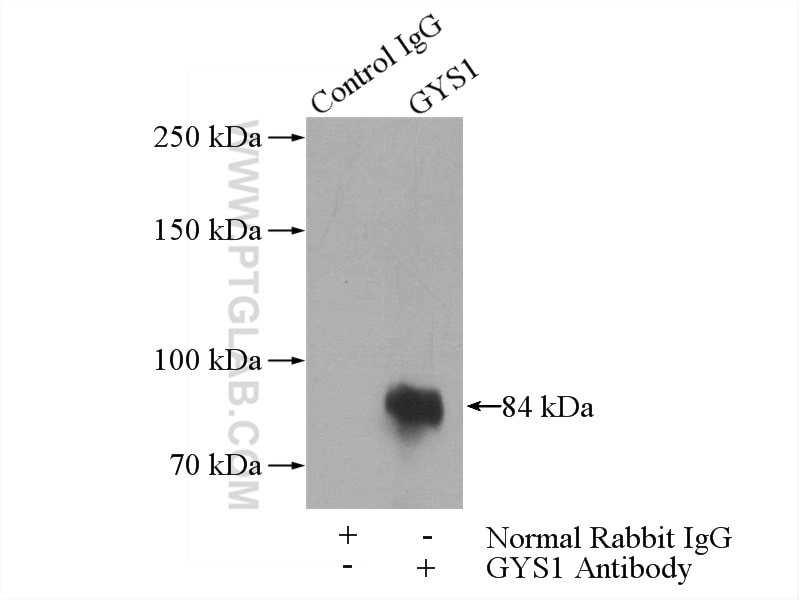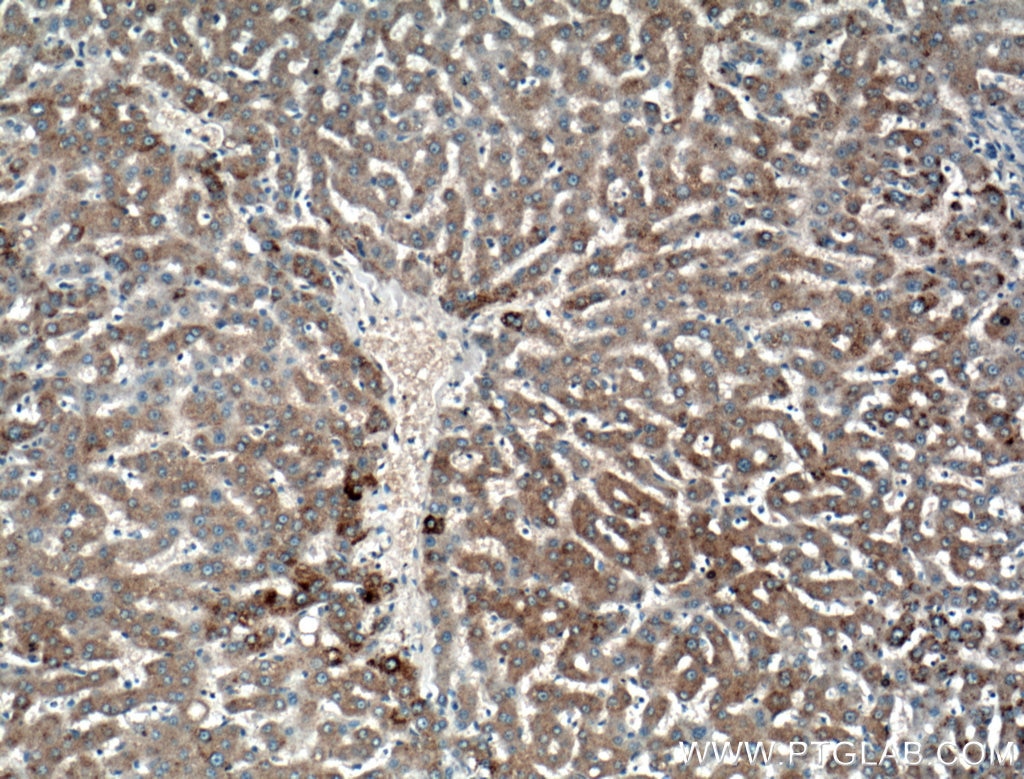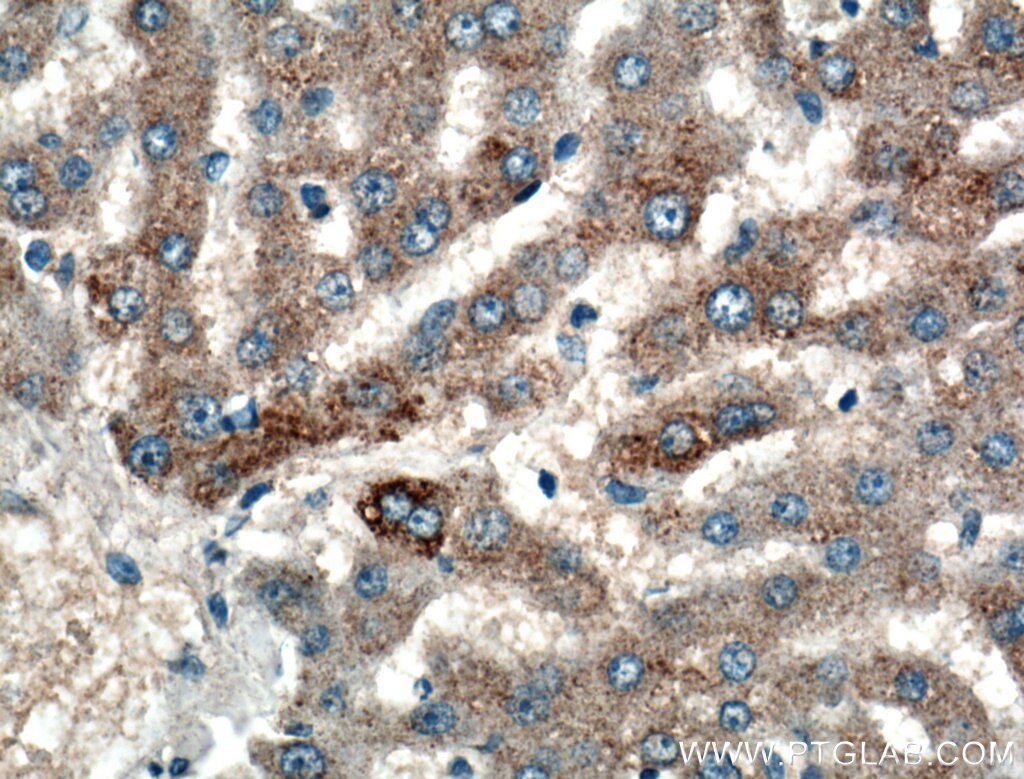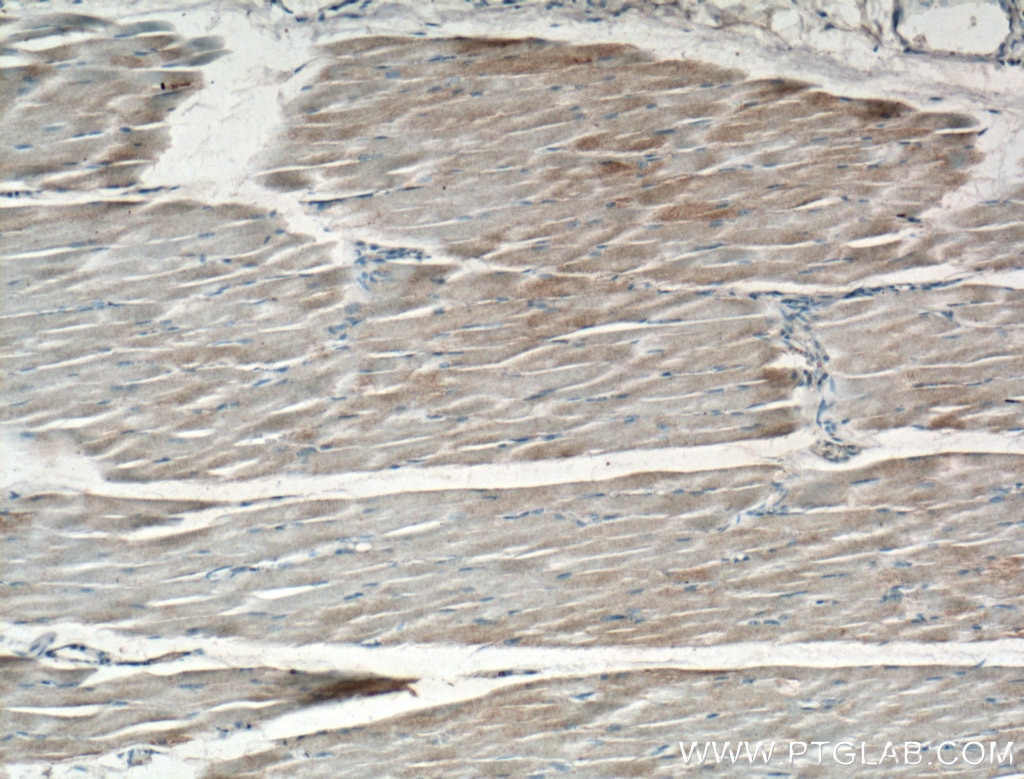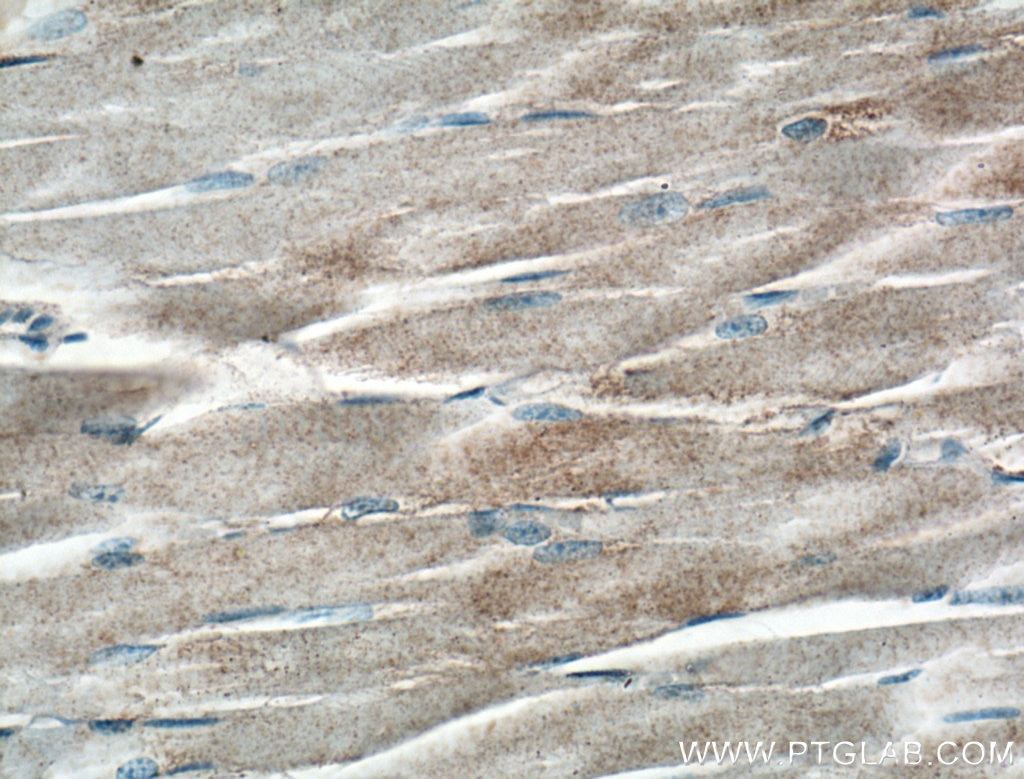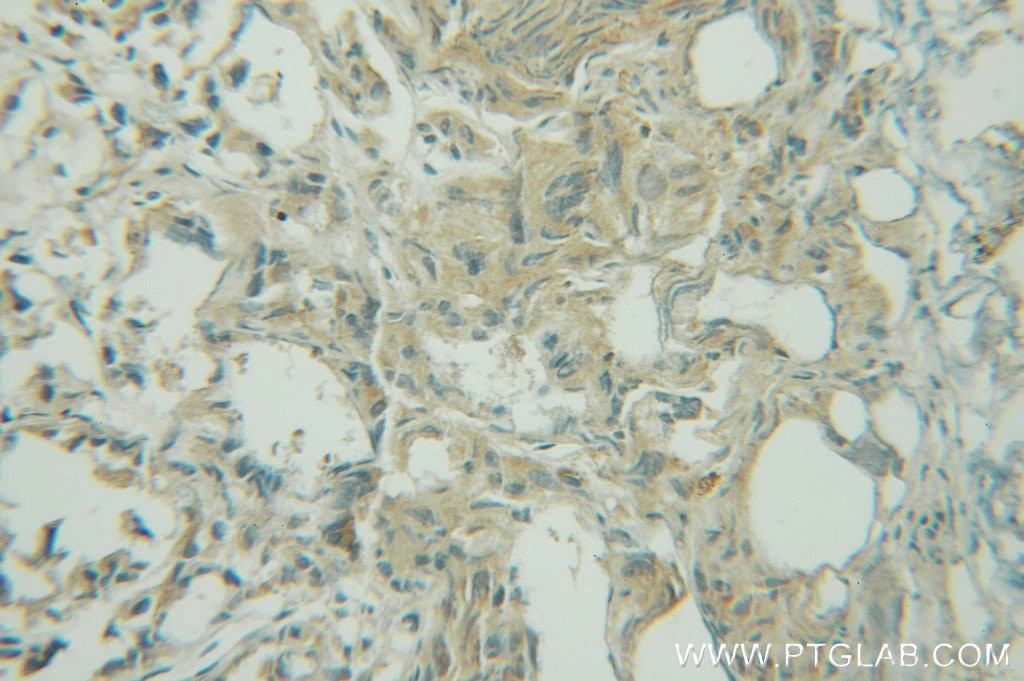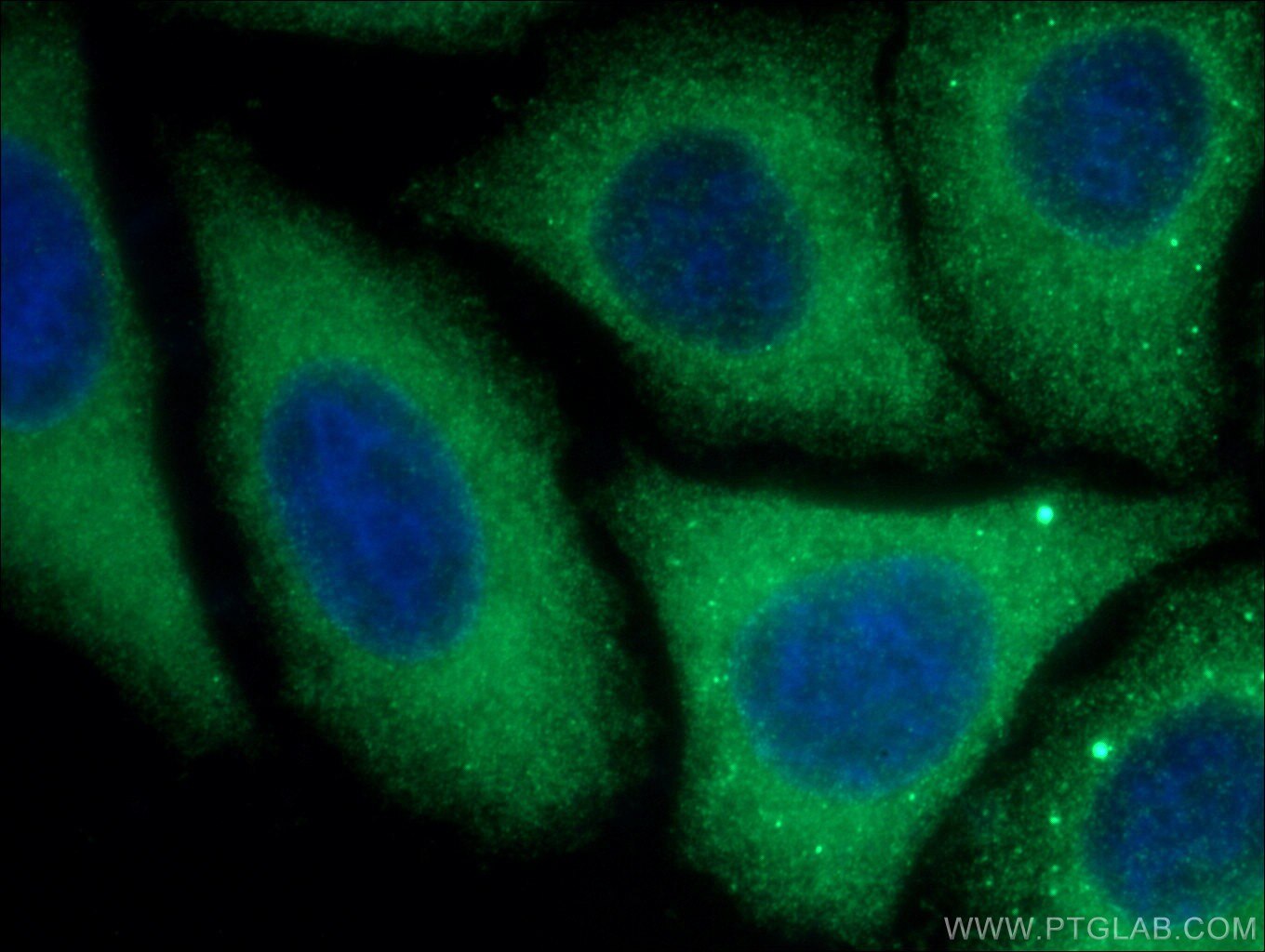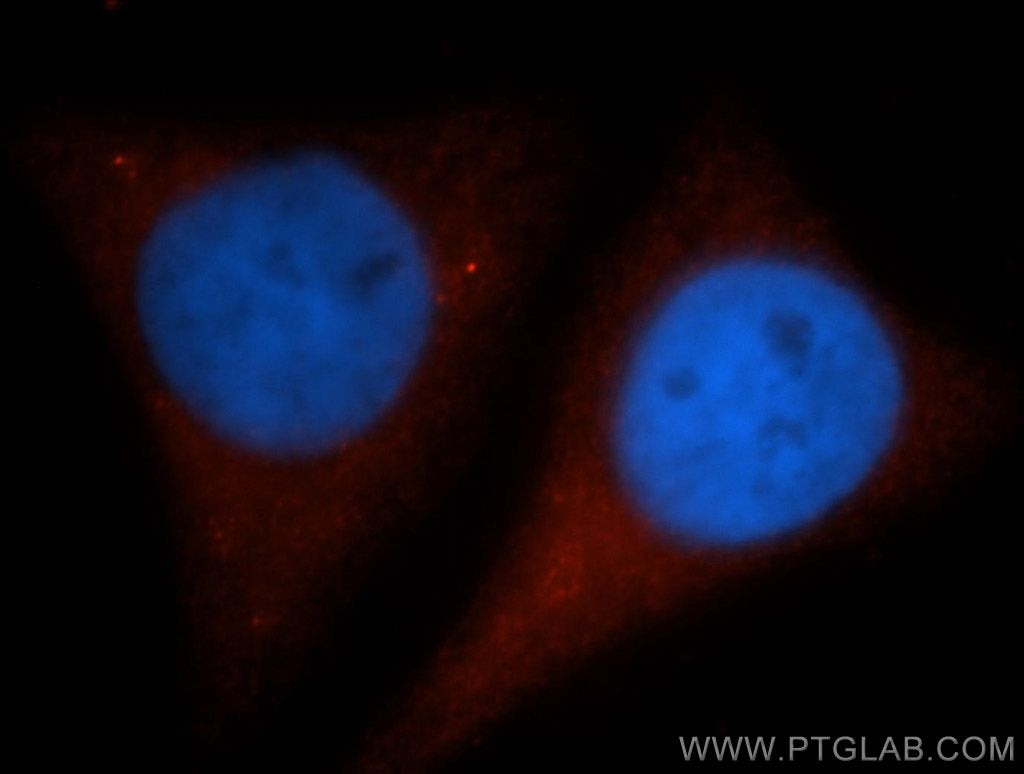- Phare
- Validé par KD/KO
Anticorps Polyclonal de lapin anti-GYS1
GYS1 Polyclonal Antibody for WB, IP, IF, IHC, ELISA
Hôte / Isotype
Lapin / IgG
Réactivité testée
Humain, rat, souris
Applications
WB, IHC, IF/ICC, IP, ELISA
Conjugaison
Non conjugué
N° de cat : 10566-1-AP
Synonymes
Galerie de données de validation
Applications testées
| Résultats positifs en WB | cellules HeLa, cellules Jurkat, cellules K-562, tissu cardiaque de rat, tissu de muscle squelettique de rat, tissu de muscle squelettique de souris |
| Résultats positifs en IP | tissu de muscle squelettique de souris |
| Résultats positifs en IHC | tissu hépatique humain, tissu de cancer de la prostate humain, tissu de muscle squelettique humain il est suggéré de démasquer l'antigène avec un tampon de TE buffer pH 9.0; (*) À défaut, 'le démasquage de l'antigène peut être 'effectué avec un tampon citrate pH 6,0. |
| Résultats positifs en IF/ICC | cellules HepG2, |
Dilution recommandée
| Application | Dilution |
|---|---|
| Western Blot (WB) | WB : 1:1000-1:4000 |
| Immunoprécipitation (IP) | IP : 0.5-4.0 ug for 1.0-3.0 mg of total protein lysate |
| Immunohistochimie (IHC) | IHC : 1:50-1:500 |
| Immunofluorescence (IF)/ICC | IF/ICC : 1:50-1:500 |
| It is recommended that this reagent should be titrated in each testing system to obtain optimal results. | |
| Sample-dependent, check data in validation data gallery | |
Applications publiées
| KD/KO | See 1 publications below |
| WB | See 13 publications below |
| IHC | See 5 publications below |
| IF | See 1 publications below |
Informations sur le produit
10566-1-AP cible GYS1 dans les applications de WB, IHC, IF/ICC, IP, ELISA et montre une réactivité avec des échantillons Humain, rat, souris
| Réactivité | Humain, rat, souris |
| Réactivité citée | rat, Humain, souris |
| Hôte / Isotype | Lapin / IgG |
| Clonalité | Polyclonal |
| Type | Anticorps |
| Immunogène | GYS1 Protéine recombinante Ag0857 |
| Nom complet | glycogen synthase 1 (muscle) |
| Masse moléculaire calculée | 84 kDa |
| Poids moléculaire observé | 84 kDa |
| Numéro d’acquisition GenBank | BC007688 |
| Symbole du gène | GYS1 |
| Identification du gène (NCBI) | 2997 |
| Conjugaison | Non conjugué |
| Forme | Liquide |
| Méthode de purification | Purification par affinité contre l'antigène |
| Tampon de stockage | PBS avec azoture de sodium à 0,02 % et glycérol à 50 % pH 7,3 |
| Conditions de stockage | Stocker à -20°C. Stable pendant un an après l'expédition. L'aliquotage n'est pas nécessaire pour le stockage à -20oC Les 20ul contiennent 0,1% de BSA. |
Informations générales
GYS1(Glycogen [starch] synthase, muscle) is the the rate limiting enzyme of the insulin-induced glycogenesis, transferring glucose units from UDP-Glc to a glycogen primer. It catalyzes the linear addition of glucose residues to the branching structure of glycogen, providing a convenient store of glucose for times of metabolic need. This protein has 2 isoforms produced by alternative splicing.
Protocole
| Product Specific Protocols | |
|---|---|
| WB protocol for GYS1 antibody 10566-1-AP | Download protocol |
| IHC protocol for GYS1 antibody 10566-1-AP | Download protocol |
| IF protocol for GYS1 antibody 10566-1-AP | Download protocol |
| IP protocol for GYS1 antibody 10566-1-AP | Download protocol |
| FC protocol for GYS1 antibody 10566-1-AP | Download protocol |
| Standard Protocols | |
|---|---|
| Click here to view our Standard Protocols |
Publications
| Species | Application | Title |
|---|---|---|
Int J Biol Sci PYGL-mediated glucose metabolism reprogramming promotes EMT phenotype and metastasis of pancreatic cancer | ||
J Invest Dermatol Enhanced Glycogen Metabolism Supports the Survival and Proliferation of HPV-Infected Keratinocytes in Condylomata Acuminata.
| ||
Arterioscler Thromb Vasc Biol Inducible metabolic adaptation promotes mesenchymal stem cell therapy for ischemia: a hypoxia-induced and glycogen-based energy prestorage strategy. | ||
Metabolism Recurrent hypoglycemia increases hepatic gluconeogenesis without affecting glycogen metabolism or systemic lipolysis in rat | ||
J Ethnopharmacol Si-Ni-San promotes liver regeneration by maintaining hepatic oxidative equilibrium and glucose/lipid metabolism homeostasis | ||
Mol Nutr Food Res Douchi Peptides Vy and Sfllr Improve Glucose Homeostasis and Gut Dysbacteriosis In High-Fat Diet-Induced Insulin Resistant Mice |
